Eyeballing
the
MOVE
Assassination
Site
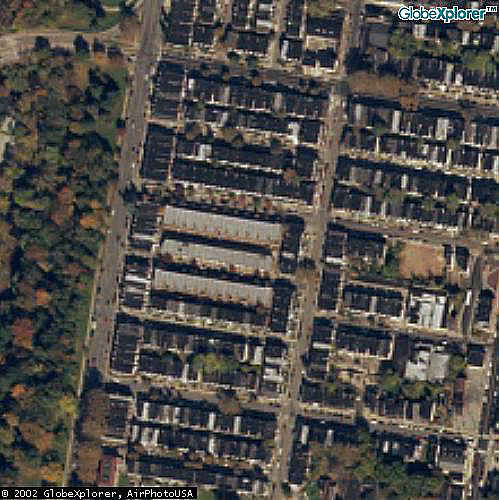

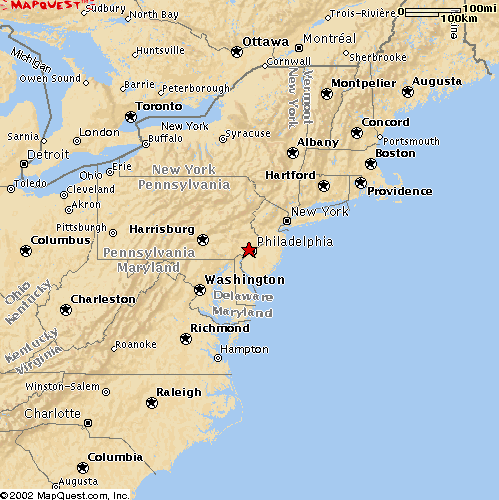



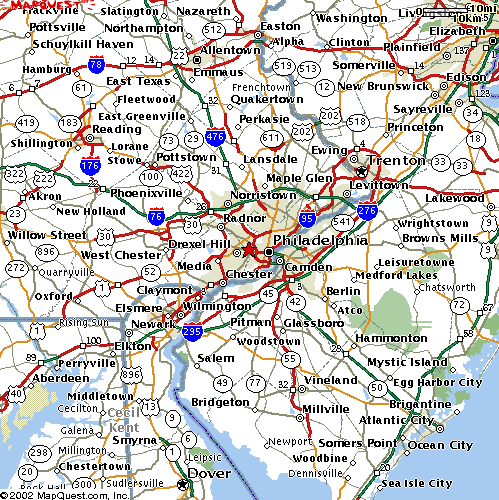



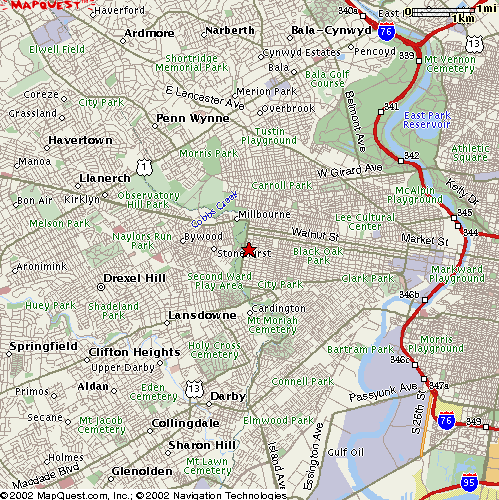

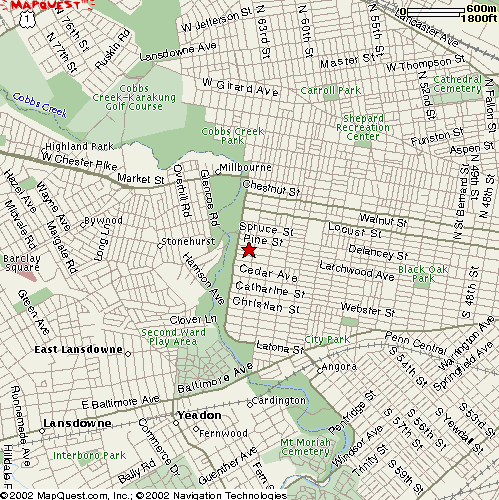

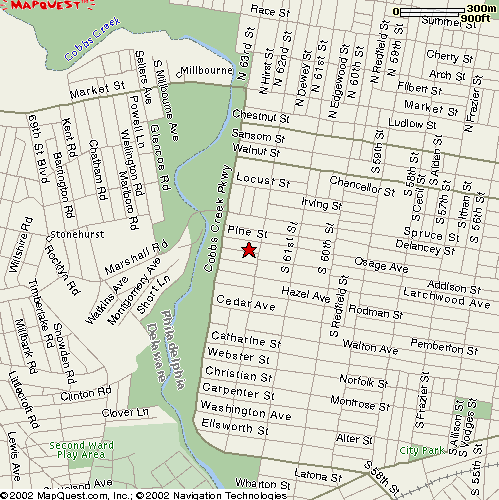
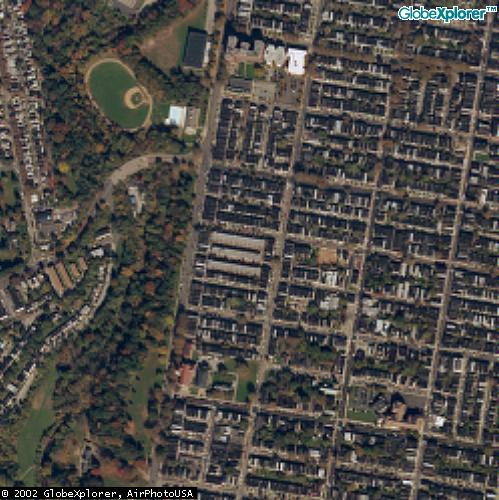
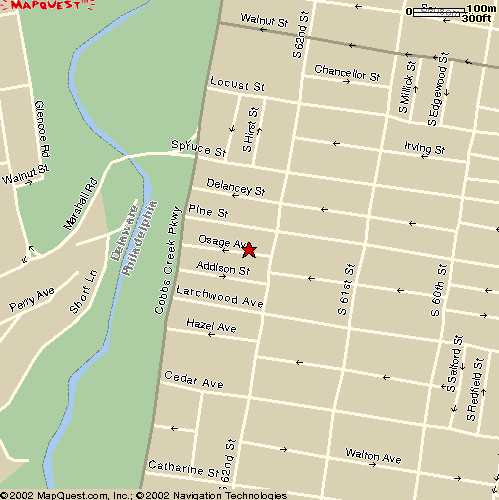


5 September 2002. One of the
Assassination Eyeball
series.
Source of maps and photos: Mapquest.com
(color) and TerraServer
(monochrome).
http://www.esu.edu/scap_ANNUAL/ARTICLE4.96A.html
[Excerpt]A RHETORICAL STUDY OF THE MOVE DIATRIBE IN CONTEMPORARY AMERICA
Jeffrey Nelson and Gina Kaye Maddox
Jeffrey Nelson is an Associate Professor of Communication Studies at Kent State University, Trumbull Campus. Gina Kaye Maddox is an Instructor in the Department of Communication and Theatre at Mount Union College.
A rhetor using diatribe works to ridicule societal customs by making outrageous statements considered absolutely offensive to prevailing notions of modesty or decency. Windt (1990) has depicted the diatribe as "absurdist moral dramaturgy intended to assault sensibilities, to turn thought upside down, to turn social mores inside out, to commit in language the very barbarisms one condemns in society" (p. 225). At least in western civilization the diatribe traces its origin to the cynics of ancient Greece, individuals who believed in the concept of complete freedom for every human being, with no required conformity to rules enacted by the authorities (Dudley, 1937; Windt, 1990).
Among recent research projects delving into the genre of protest rhetoric, some important work on the diatribe has been accomplished by investigators such as Hart (1978), Pearce, Littlejohn, and Alexander (1987), and Windt (1972, 1990). Yet Hart's efforts dealing with irreligious rhetoric and Pearce, Littlejohn, and Alexander's research into the Christian right do not examine rhetors who consistently used the diatribe for an extended period in their lives, as did the ancient cynics. Even Windt's pieces delving into the Yippies analyze the communications of individuals who after a relatively few years of staging outlandish forms of opposition to the establishment became, in many cases, a part of that establishment (Rubin, 1976).
One group that has continually employed the diatribe for more than two decades calls itself MOVE. These people, most of them living in Philadelphia, bear a remarkable similarity to the Greek cynics, both in general lifestyle and in the kind of rhetoric employed. MOVE members have exerted a significant impact not only on the Philadelphia municipal government but on the residents of that major United States city.
In exploring the diatribe as utilized by MOVE, this article takes special note of the rhetorical use of obscenity as a concept associated with terms such as "disgusting," "filthy," "grotesque," "offensive," "revolting," and "lewd" (Webster's, 1986, p. 1557). In fact, obscenity has served as a staple in the repertoire of rhetorical strategies favored by users of the diatribe (Windt, 1990). This study is justified in three ways. First, MOVE's rhetoric provides a vivid example of the use of diatribe in contemporary society. The article may contribute to our discipline's knowledge of this device and how it functions. Second, though the article concentrates on MOVE, the rhetorical principles discussed as well as their adaptation within the study's parameters can shed light on the rhetoric of other groups. Finally, the MOVE organization still receives strong notice from Philadelphians as well as others across Pennsylvania and the nation; witness the intense publicity surrounding the group's court battle
To provide a comprehensive analysis of MOVE's use of obscenity in the diatribe, the article delves into three categories: (1) the members' lifestyle, (2) the types of symbolic actions utilized in addition to language, and (3) the language adopted. The examination concentrates on the 1971-1990 period when the organization stood at its peak with 100 or so members.
http://www.mindfully.org/Reform/MOVE-Philadelphia-Pay-$1_5M24jun96.htm
[Excerpt]MOVE is a loose-knit, mostly black group whose members all adopted the surname Africa, advocated a "back-to-nature" lifestyle and preached against technology. In 1985, members of the group began blaring profane anti-government messages over a loudspeaker from their row house in an effort to free nine members who had been convicted of killing a police officer.
MOVE's neighbors complained that members constantly harassed passersby, that the stench of human and animal feces was overwhelming the neighborhood, and that MOVE members had been seen with weapons.
Police officers arrived at the MOVE home at 6221 Osage Avenue in West Philadelphia on the morning of May 13, 1985 to serve arrest warrants on four MOVE members, and were met with gunfire, authorities said. Police fired back, touching off a 90-minute gun battle.
Later that day, police dropped the bomb on the MOVE row house from a state police helicopter. The bomb missed its target -- a fortified bunker on the roof -- and started a fire that burned an entire city block.
The plaintiffs contended that then-Police Commissioner Sambor and then-Fire Commissioner Richmond, who were on the scene, agreed to let the fire burn.
The fire destroyed 61 row houses, including MOVE's, and left 250 people homeless. Of the 11 people killed in the fire, five were children.
[New rowhouses shown below have been built since the bombing and firestorm.]
|
 |
 |
 |
 |
 |
 |
 |
 |
 |
 |
 |
 |
 |
 |
 |
 |
 |
 |
 |
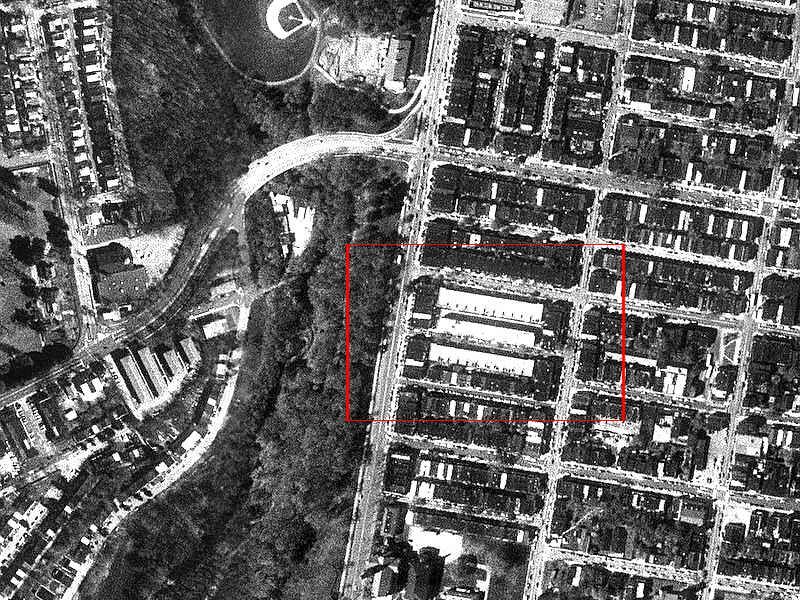 USGS photo 24 Apr 1999 |